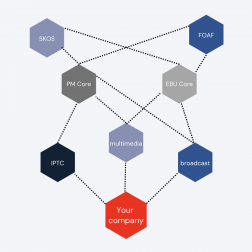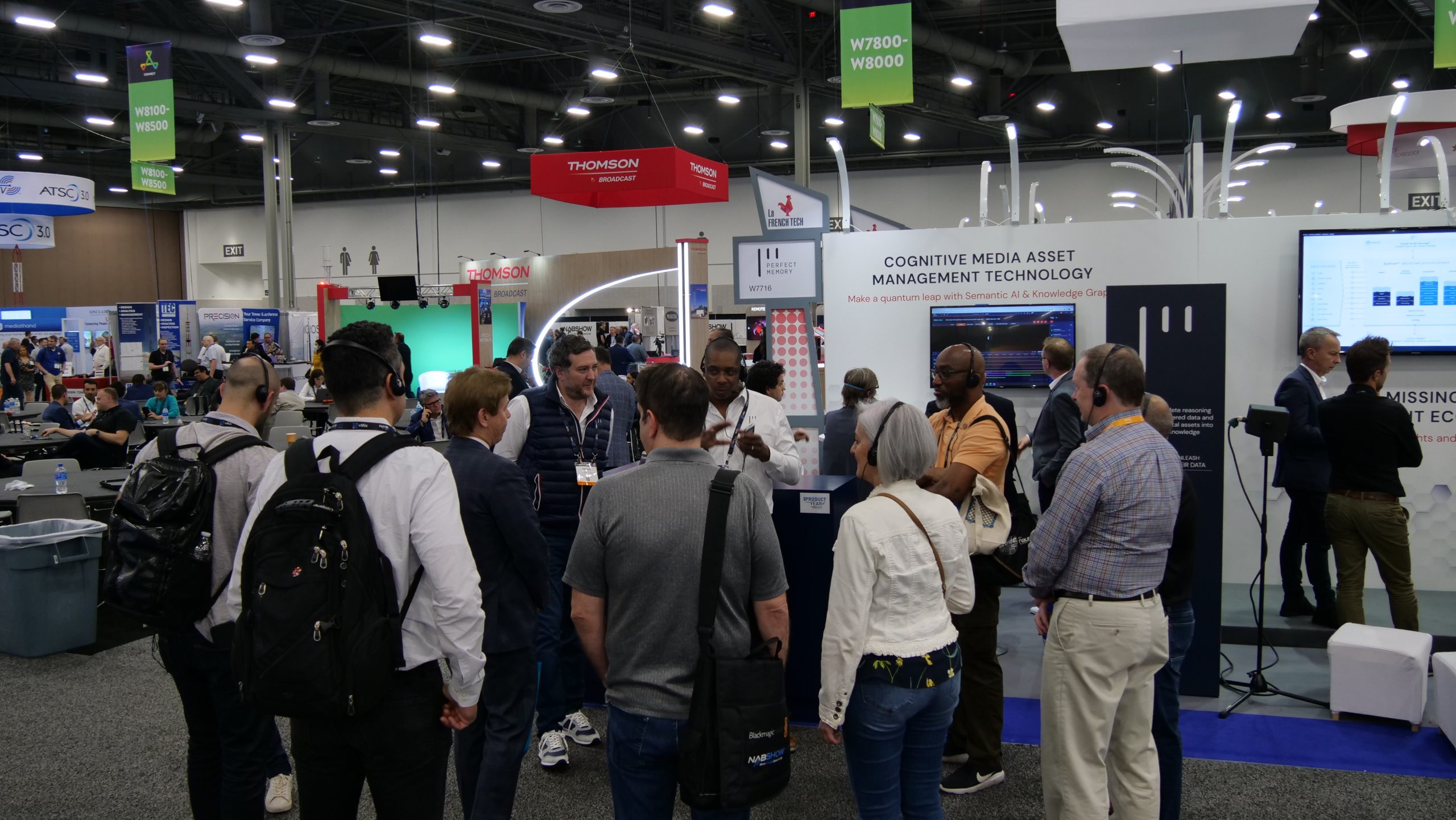After a year of absence, the NAB show has made its big comeback in Las Vegas! The opportunity for many exhibitors to come and present their developments over the past two years. And what we can already tell you is that the media sector is operating its digital transformation at high speed! This is a look back at the show’s most striking trends.
Platformisation of solutions and remote collaboration are becoming the norm
The pandemic has accelerated the transformation of research, access, exchange, and content production processes, which are becoming collaborative and connected.
This trend, which had already emerged before the global Covid-19 crisis, also simplifies the adoption of new economic models, based on subscription to dematerialisation solutions for audiovisual professions.
“Virtual production workflows and streaming technologies have evolved dramatically. However, this dematerialisation of flows raises new questions, such as, how to optimise the exploitation of the thousands of pieces of content and metadata produced? The quality of collaboration between actors is becoming more and more strategic. The media are looking to invest in solutions that meet the challenges of the digital transformation of businesses.”
Media seeking greater efficiency in their use of AI
Content intelligence was the main theme of this 2022 edition of the NAB show. Until now, “content intelligence” seemed to boil down to AI and machine learning tools. Indeed, the latter has massively penetrated organisations in the last two years, and are used to automate the creation of metadata, and to analyse content, improve their access and their recycling. However, if these tools accelerate business processes, today they find their limits through the rigidity that they impose in structuring and accessing content.
“It seems necessary to show market players, who want to get a head start on their competitors, that solutions exist, which put AI at the service of human intelligence, for example in the case of semantic AI. The Perfect Memory cognitive platform obviously integrates a data refining process, which uses the best AI techniques on the market, and allows content analysis and the extraction of relevant metadata, but above all, our solution allows you to go beyond a simple data extraction. It gives back control to the profession, by allowing them to organise the orchestration of AI solutions, making a virtuous cooperation between automation tools and professions possible. Indeed, Perfect Memory integrates a semantic architecture model that significantly improves the content description and indexing processes, by reorganising all the company's data around an architecture centered on its business and operational reality. The stakes are enormous. It is no longer just a matter of analysing content to extract new data, but of transforming the extracted data into intelligible information that can be directly used by all businesses in their operational context, in order to significantly improve the impact on the business.”
Workflows at the heart of the customer experience
The digital transformation, being carried out by the media today, aims at rationalisng costs and improving operational efficiency, through greater flexibility and scalability of business solutions.
Rights holders, and in particular media and sports organisations, can generate more revenue by experimenting with new distribution channels for consuming their content, in order to create new, more creative, personalised, and immersive experiences. These customer experiences erase the boundaries between user experiences. Online gaming offers exclusive live events, e-sport audiences compete with the audiences for the world’s biggest sporting events, OTT platforms are considering experiments around metaverses, etc. Content consumption patterns are changing, becoming more creative and polymorphic. The multiplication of content catalogue consumption channels, and the explosion in the diversity of products offered to audiences, calls for greater control of data and their use by market players. The volume generated requires the industrialisation of content description and indexing processes, in order to set up workflows adapted to changing market needs.
"Cognitive technologies are unique on the market, because they allow businesses to be placed at the heart of information processing, avoiding the pitfall of making data production an end in itself, an above-ground process for the technicians. By introducing an interoperability layer, restoring information carried by the data produced within IT ecosystems, each content created can be reused on all distribution channels, automatically reprocessed, thanks to specific workflows, to correspond to the precise needs of the distribution channel (creation of presentation thumbnails, trailers, subtitling, etc.). The creation of a common language, based on the business and operational realities of our customers, also makes it possible to natively embed the rights and legal constraints, related to content, for ensuring their proper use. Today, no other tool on the market is capable of providing this level of rationalisation, specialising down to the smallest business requirement, in the exploitation and enhancement of content.”
Couldn't make it to the NabShow this year?
Do you want to discover semantic technologies?
Quickly have a look to our summer webinar programme!

PAST - 28 June 2022 - 11:30 AM CET
Tidy up your rooms! Data management seen differently!

PAST - 07/07/2022 - 1:00 PM CET
[EXCLUSIVE] – Gartner’s and France Television’s testimony on the usage of knowledge graph & ontologies in real-life

PAST - 12 July 2022 - 1:30 PM CET
Open Data at the service of content indexing – how Wikidata can help you

PAST - 26 July 2022 - 1:30 PM CET
« I want to find clips of a happy Lebron James with a yellow jersey ! »








